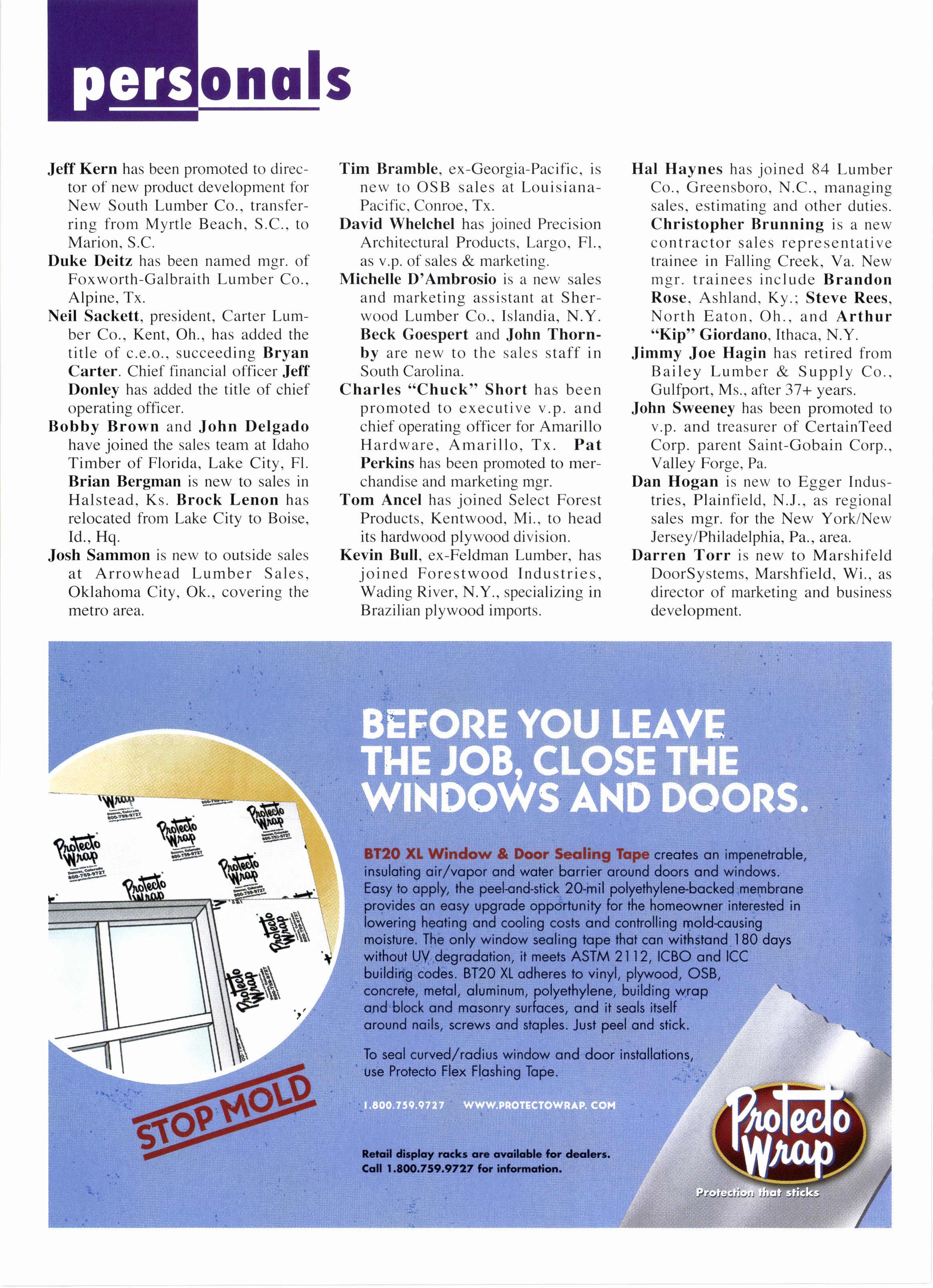
3 minute read
ood HTHT}t
netry is also very effective. "You can pull different areas together or create a focal point." Dunn says.
To make a small kitchen look larger, consider installing lighter cabinets and a darker hardwood floor, says Sarah Reep, design director for KraftMaid Cabinetry. "Having lighter tones at the horizontal eye level will make the area seem larger, and the darker floor will help warm up the room," she says.
Maple is an especially flexible hardwood that mixes well with oak, hickory and cherry, Reep says. Hickory also works well with oak and cherry, she adds.
Reep recommends working with a designer and always combining samples to pull a palette together. "Put samples of the products together and look at them as a family," she says. "Before you place an order, make sure your choices all go well together."
Limit the number of contrasting wood tones in the kitchen to about three. Reep advises. "Sometimes people think more is better, and that's not always the case," she says.
hardwoods for the cabinets and floor. suggests Heather Dilger, senior designer for MasterBrand Cabinets. In addition. consider base cabinets with a finish that complements, not matches, the wall cabinets. Or scatter a couple "different" cabinets -either different species or the same species with contrasting finishes-among those on the walls and floor. Finish off the look r,vith a contrasting finish for the island and floors.
Kim Dunn, Wellborn Cabinet Inc., says one popular look combines maple cabinets finished in antique evergreen and a contrasting honey tone. Giving one layer of stacked moulding a different finish that ties in with the cabi-
Winter Park, Fl., interior designer Jennifer Haddock put these principles to work in a recent kitchen project. A darkly stained oak floor complemented red painted walls. White cabinets contrasted with a cherry bead board back splash. The cherry bar stools with upholstered plaid seating complemented a darkly stained kitchen table.
"There are so many things you can do with wood," she says. "You can bring out so many different colors."
Many of the guidelines for choosing wood in a kitchen apply to other rooms of the house as well. "We're really trending away from everything matching," says James Nauyok of Baker furniture. "There are no hard rules. You could mix virtually any species in any room. Just consider the finish. the stvle. the look."
Nauyok likes to envision a party when he furnishes a room. "You don't want everyone at the party to look the same, but you do want them to look like they are going to the same party," he says. "Make sure the different personalities work together. If something is over- or under-dressed. it sticks out like a sore thumb."
He suggests blending light, medium and dark tones in hardwood furniture with contrasting floors. "You don't want your furniture to disappear into the floor," he says. "If your furniture is dark, you might want a mediumtoned wood floor. If the furniture is light, you might want a darker floor."

According to Susan Sargent, an author and artist known for her rich use of color, "We've come a long way in empowering people to do a room in stages, mixing old pieces and new. You don't have to worry if the wood tones don't match. In the end. it all comes down to personal taste."
Painted pieces, especially accessories, help complement stained furniture, Sargent says. "Wood is a fantastic neutral with a lot of depth, lines and structure. It can help balance the soft textiles and vivid colors that make a room cheerful and comfortins."
Dark wood stains look great with fabric that has warmer yellow tones or cooler blue tones, Sargent says. Warmer wood stains look best with fabrics in warm tones (like paprika, olive or red)-not cool tones, Sargent says.
Mouldings. like furniture and cabinetry, can be finished in an endless variety of stains and paints. For painting, consider using poplar, which is especially stable and less expensive than some species. suggests Memphis, Tn., architect David Kenoyer. White trim paired with stained hardwood f loors remains a favorite. but painting trim in a neutral tone a couple shades lighter than the wall also is growing in popularity. Kenoyer says. "lt gives a little more richness to the wall," Kenoyer says.
Stained moulding does not have to match the floors. Kenoyer says. Again, compare samples side by side to see how they pair up.










